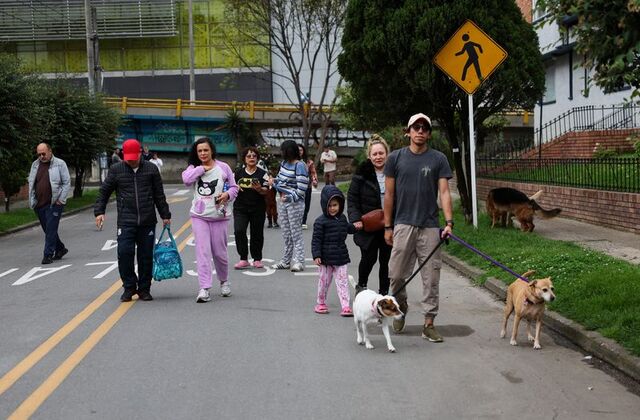A strong 6.5 magnitude earthquake struck central Colombia on June 8, according to the German Research Centre for Geosciences (GFZ). The tremor was felt widely across the country, including in major cities such as Bogotá, Medellín, and Cali. Despite the earthquake’s strength, no fatalities have been reported, although minor injuries and localized infrastructure damage have been confirmed.
The epicenter of the quake was near the town of Paratebueno in the Cundinamarca department, at a shallow depth of 10 kilometers. Shallow earthquakes tend to produce more intense surface-level shaking, which was reflected in widespread reports of trembling buildings and emergency evacuations.
Residents in Bogotá, located more than 180 kilometers from the epicenter, described feeling the ground shake and seeing buildings sway. Emergency sirens were activated in multiple areas, and many people evacuated high-rise buildings to gather in open spaces. Similar reactions were recorded in Medellín and other parts of central Colombia.
Initial assessments by the Colombian Geological Service suggested a slightly lower magnitude, but international monitoring agencies, including GFZ, confirmed the 6.5 reading. Following the main tremor, at least two aftershocks were recorded with magnitudes of 4.0 and 4.6, prompting continued alerts in the region.
According to Colombia’s disaster management authority, four people in the towns of Paratebueno and Medina were injured, mainly due to falling objects and rapid evacuation efforts. In Bogotá, one individual received medical attention for anxiety and panic but was not seriously harmed. Structural inspections are ongoing, but no major building collapses have been reported.
Some damage has been reported to older infrastructure, particularly churches and municipal buildings in rural areas. Authorities also noted power outages in several communities near the epicenter, although most electricity services have since been restored. Transportation routes in the affected area are being examined, with some roads showing surface cracks.
The national emergency response was promptly activated. Bogotá’s mayor confirmed that essential infrastructure—including hospitals, bridges, and schools—underwent rapid inspections and were cleared for public use. Emergency crews also responded to multiple elevator entrapments caused by temporary power disruptions, with all individuals safely rescued.
Colombia is situated in a seismically active zone, with frequent tectonic activity due to the interaction of the Nazca, Caribbean, and South American plates. The 6.5 magnitude quake is one of the strongest to hit the country in recent years, though it falls short of the devastation seen during the deadly 1999 Armenia earthquake.
Colombia’s National Unit for Disaster Risk Management emphasized that more assessments will be conducted over the next few days, especially in remote areas. Structural engineers are being deployed to inspect public facilities, and emergency services will remain on standby in anticipation of further seismic activity.
The government has urged the public to remain cautious and to follow official guidelines for earthquake preparedness, including staying away from unstable structures and reporting any new damage to local authorities. While the situation appears to be stabilizing, the risk of additional aftershocks continues.
The event underscores the importance of Colombia’s ongoing efforts to strengthen disaster resilience and infrastructure safety across the country. So far, the coordinated emergency response has prevented major casualties and helped ensure public safety in the aftermath.
Source: U.S. News



